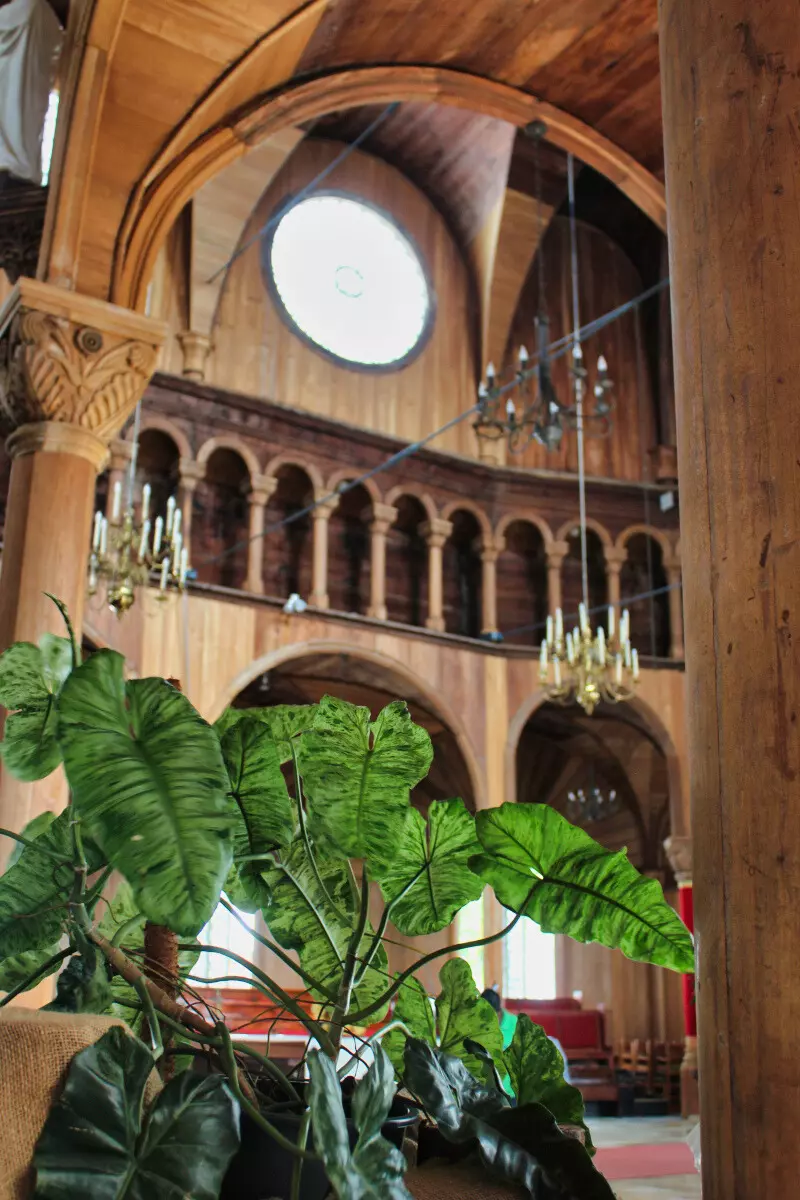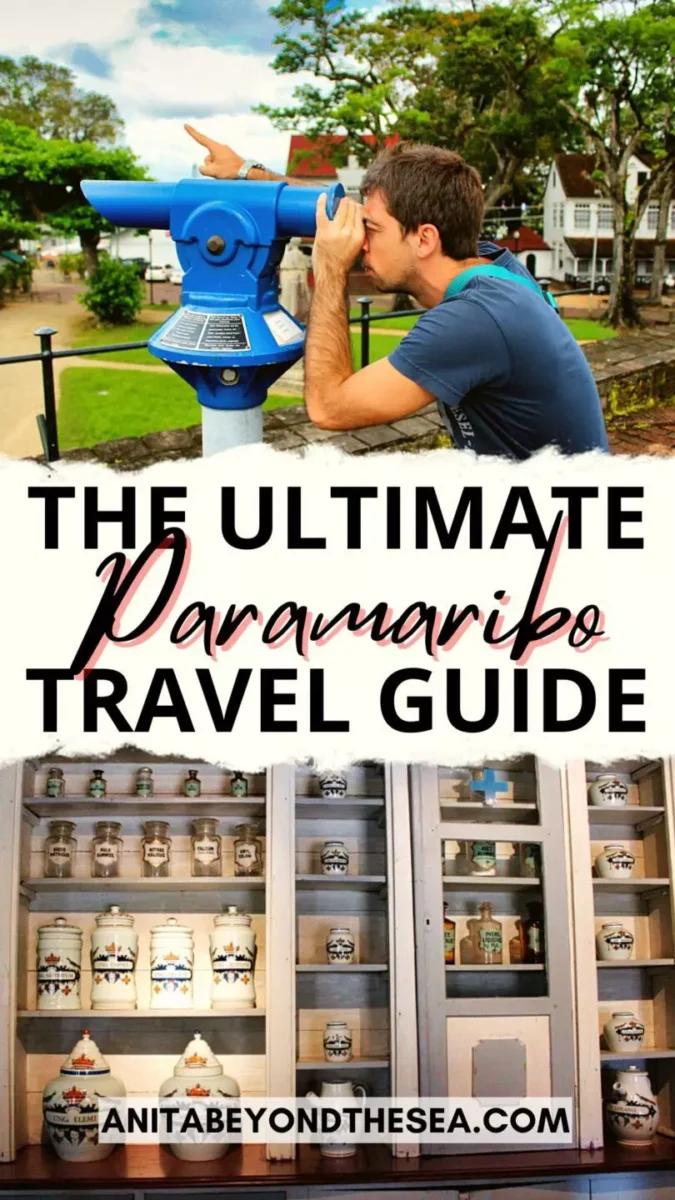Paramaribo is the capital of the smallest state in South America, Suriname. Similarly to French Guiana, the Amazonian rain forest covers almost entirely its territory (80%). Paramaribo’s charm is given by the different people that cohabit in the city. Since the first Dutch settlement in early 1600, many cultures have enlarged Paramaribo’s borders. In addition to its historical heritage, the city also offers a culinary experience thanks to all the different nationalities.
Disclosure: anitabeyondthesea.com is reader-supported. When you make a reservation through links on my site, I may earn an affiliate commission, at no extra cost for you. That will help me keep the blog up and running. Thank you!
In This Article
The Best Things to do in Paramaribo
Fort Zeelandia
Paramaribo’s fort was originally a wooden construction that French colons built in 1640. The Dutch conquered it in 1667 and changed its name to Fort Zeelandia. Through the years, the fort became obsolete, until in 1972 it became the home to the Surinaams Museum.
During the military revolution in 1980, the museum became a prison for political opponents. Nowadays, it hosts the Surinaams Museum and a permanent exhibit of reconstructions of an old apothecary shop, a cobbler’s shop, and a prison cell in its original state.
Our experience: The museum is very interesting. It showcases Paramaribo and Suriname’s history. Not to mention the view from the top is very nice, giving both on the city and Fort Zeelandia.

Saint Peter and Paul Cathedral
Saint Peter and Paul Cathedral is the largest wooden building in the Western Hemisphere. This Roman Catholic cathedral is 60 meters (194 ft) long and 44 meters (144 ft) high. The decoration on the inside is quite simple and pure, but the carving work is very accurate and rich.
However, what will catch your eye is the use of different kinds of wood, which brings out the colors in an original way. It’s also one of the greenest cathedrals I have ever been to, so many plants decorate the hall.


Mama Sranan Statue and the Presidential Palace
One of the things that surprised me the most about Suriname is its multi-ethnicity. Starting from the 17th century, Suriname’s first inhabitants, the Arawak people, met many different colonizers. Slaves from Africa were also introduced to the country. And last, the Javanese people, who later became the most present ethnicity in the country.
Mama Sranan statue perfectly honors the mix of traditions and cultures. In fact, the translation of the statue’s name is Mother Suriname. Just near the presidential palace, the statue represents a mother embracing her children. Each one of the children is one of the different ethnicities that inhabits Suriname.
The presidential palace is the symbol of Surinamese independence in 1975. This building is also a beautiful showcase of colonial architecture.

Neveh Shalom Synagogue, Arya Dewaker and Mosque Keizerstraat
They are a symbol of Suriname’s multiculturalism. The Synagogue, the Hindu Temple, and the Mosque represent some of the main religions that are practiced there.
The Synagogue is the most ancient of the three buildings. The first construction goes back to the 18th century. It was completely rebuilt in 1842, and it also hosts a small museum about the history of the Jews in Suriname. The Mosque was built in 1932, while Arya Dewaker in 2001.

Enjoy the food
Paramaribo is a food crossroad. You have the choice among many different cuisines. What we loved the most:
- Dutch meatballs are so tasty! They are made of beef and pork meat. Fried or in the oven, both versions are simply delicious!
- Javanese cuisine is one of my favorites. But unless you’re used to eating Javanese, Mexican, or Korean spicy food, do NOT ask for spicy. It’s like fire. And you won’t even enjoy your lunch.
- Dutch crepes are simply delicious, and you can taste them with many different fillings.
- Podosiri, made from Acai palm fruit is eaten with rice or cassava bread.
- Samosas were among the tastiest things I ate in Paramaribo. Coming from the Indian tradition, they’re mostly served as appetizers. And to go with almost every meal we had.
And how not to mention Parbo! Surinamese beer is the solo star among drinks, controlling 80% of the beer market in Suriname.
A night out at Paramaribo Casinos
I don’t want to do a Casino advertisement and please remember that gambling is addicting. But you can have some fun at one of the many casinos in Paramaribo. We played a little at different games. We won and we lost and we had fun. And that’s all, a once-in-a-decade experience that has its amount of fun. And you have free drinks and live music while playing.

Best time to visit
Suriname is right above the equator. Because of that, it has a rainy season going from December to July, and a dry season from July to December. Unless you don’t want the risk of being caught in torrential rains the best time to visit is during the dry season.
September and October are the warmest and sunniest months. But sometimes the temperatures get very high. My advice is to go for August and November instead. The rainfall frequency is still low and temperatures are better.
Currency and prices
Suriname’s currency is the Surinamese dollar. Since the economic crisis in September 2020, the exchange rate has been very low. In the capital, you can eat at many restaurants for a few dollars. Hotel prices are also low compared to other capitals. You can stay at luxury hotels for under 200 $/€.

Where to stay
There are plenty of choices on Booking. We stayed at Royal Torarica which is very close to the center and all the restaurants on the river.
Fun fact about Suriname: the independent state has only one cinema, but in Paramaribo, there are more than 30 casinos. It’s quite surprising when you arrive, slots are everywhere.
It’s South America’s Las Vegas.
How to get there and Visas
If you’re coming from French Guiana, you will have to take the road to Saint Laurent du Maroni. Once arrived, you can leave your car at one of the guarded parking spaces. I recommend you do this as your car may be damaged or stolen, even if you leave it for a short amount of time.
Your next step will be to take the pirogue on the Maroni river to Albina, on the other side.
Congratulations you’ve made it to Suriname!
Now the funniest part of your trip begins with taxi hunting. Every day there are many taxi waiting for tourists or workers to go to Paramaribo. The only drawback is they will want to fill their taxis capacity, usually between 6 and 8 people. You have two choices: you can wait, sometimes even an hour. Or book a taxi for yourself. You could also try to negotiate by adding the return journey. Once your driver is ready, you’ll have 2 more hours on the road to Paramaribo.

If you’re coming from another destination, you can check the best flight to join Paramaribo airport. It is very well-served, and close to the city.
You can get a tourist visa to enter Suriname, which will allow you to stay up to 90 days. It’s useful if you want to visit other countries in South America.
Is it safe?
Suriname is a very poor country and unfortunately, there are many homeless in the streets. But the crime rate is very low. So yes, it is safe, as long as you stay on the touristy path and don’t venture too much into unsafe areas. And remember to mind your bag in crowded places.
Our top posts for your trip to South America
In the end, is it worth visiting?
Paramaribo has a unique charm. It’s rare to see such a mix of cultures and traditions in a small city of only 300.000 inhabitants. Hence, I think it would be a great addition to your South America itinerary. If you are planning to make it part of a larger itinerary, check all the activities you can do in neighboring French Guiana.
Have you liked this post? Sharing is caring!






